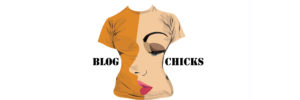The more recent work of Michael Johnson has almost become part of the vernacular and is widely seen in private, corporate and institutional collections. He has been well exhibited in both solo and prestigious group exhibitions since the iconic The Field exhibition in Melbourne 1968, heralding him as a leading abstract painter. He has a large monograph dedicated to his work, by Barry Pearce, long-time and now former Curator of Australian art at the Art Gallery of NSW, which was published in 2004.
Michael Johnson’s work since the c mid 1980s has been described as: “metaphysical orchestration of colour and a muscularity of presence” to “ruptured, sinewed application of base, primary colour performs an opera of gestures and painterly manoeuvres”.
This florid language is a good match for the over-sized, imposing, almost rambunctious works. Beneath the surfaces of strident colour and thickly sculptured paint in a fairly tightly held structural composition, they harbour gentler reminiscences of emotion and experiences: musical symphonies, king tides, thunderous night skies, memorable sunrises ……
As wonderful as they are, I can’t credit these quotes, as they have been borrowed many times over in many articles about the artist. Whoever said it first, nailed it.
But this is not about his latest painting. This is about a handful of early works which have been carefully tucked away in the back of his studio, waiting for their time in the spotlight. This is a body of work from the 1960s and 1970s, paintings and works on paper from the artist as a much younger man. The exhibition, at Annette Larkin Fine Art, is nicely timed with the rehang of the Australian collection at AGNSW, in which his major work from 1968 Frontal 2 (first exhibited in The Field exhibition in 1968) is on display, along with a series of early drawings and a couple of paintings by Johnson which have been brought out of the basement.

Michael Johnson Frontal 2 1968 acrylic on canvas 198x214cm Collection AGNSW, Gift of Michael & Margo Johnson
Orchestrated, muscular, ruptured, operatic – these works are not. The energy level of his earlier work is markedly different from his latter, but his insistence on colour as the driving force within an artwork has been there from the beginning and has remained true throughout his career.

Michael Johnson Spiral VI, 1971 Vinylic on canvas
183 x 179 cm signed, dated and titled ‘ Michael Johnson 1971 No.6’ (on the reverse) Image courtesy the artist and Annette Larkin Fine Art
There is no doubt that these paintings and works on paper – gouache & collage – are as fresh and as vibrant as when they were first painted. There is a geometric order to the work, but it is colour which is the key element, intense and pulsing with an optical energy, in broad flat fields which either defy or intensify each other.

Michael Johnson Untitled, 1965
gouache on paper
45 x 44.6 cm Image courtesy the artist and Annette Larkin Fine Art

Michael Johnson Study for Frontals, 1966
gouache on paper
67.5 x 82 cm Image courtesy the artist and Annette Larkin Fine Art
His approach is obviously one of abstraction, though Johnson refers to nature, art history and the urban environment as sources of inspiration. Pure abstraction is not easy to achieve in a painting in way in which it endures. Johnson brings the elements of painting together in way which is cohesive, dynamic, fresh and beautiful. These are wonderful to keep looking at.

Michael Johnson Sharp (aka Wave), 1965 Vinylic on canvas 133.5 x 96 cm. Image courtesy the artist and Annette Larkin Fine Art
Sharp is electric: the yellow zings sharp and tart and tussles with the warmth and depth of the ambiguous purple-brown. The very simple block shapes of colour are anything but static or boring to behold: the whole has a real visual thrill to it. Sharp puts the spring in your step.
Sofala is electric in its simplification of that quintessential Central West vision, the winding road to Sofala trod by many Australian artists. So different from Donald Friend’s quaint rendition of a Sofala street scene (he visited with Russell Drysdale), figurative and romanticised or Whiteley’s naturalistic, sensuous sweeping line and softened palette of a similar road in the NSW Central West, Johnson’s Sofala has a boldness about it that echoes the loudness of London in the mid-60s.

Michael Johnson Sofala, 1965 Vinylic on canvas
176.5 x 176.5 cm. Image courtesy the artist and Annette Larkin Fine Art

Donald Friend Sofala Street 1947 oil, pen & ink on canvas. 51.5×61.2cm. Coll AGNSW, Gift of Margaret Olley 1995. Image courtesy AGNSW & the Estate of the artist.

Brett Whitely Summer at Carcoar 1977 oil & mixed media on pineboard 244×198 cm. Coll Newcastle Region Art Gallery, Gift of Dr William Bowmore AO. Image courtesy Newcastle Region Art Gallery
Even as a young artist, Johnson showed he had a sophisticated eye and hand to bring all the structural, emotional and technical elements of paintings together. He learnt at the kitchen table, firstly under the guidance of his illustrator father. He absorbed the art prints his mother hung around the home, the subtle light and moodiness of Albert Pinkham Ryder for instance.

Albert Pinkham Ryder Moonlit cove mid 1880s. oil on canvas. Coll Phillips Collection, Washington, acquired 1924.
He worked as an apprentice graphic designer, designing ads on pages, shifting shapes around to achieve maximum impact. He learnt as an art student at Ashton’s, to be analytical and non-emotional in his approach to appraising his work. He spent hours experimenting with colour, by painting over black and white illustrations and photographs and he hung out around Sirius Cove, mucking around at the water’s edge, observing shifting tides, sands and light. It all sinks in.
It was his first trip to London, via Europe, as a 21 year old which opened his eyes to the potential for abstraction in his own work. The epiphany seems to have been the exhibition Vanguard American Painting at the American Embassy in London in 1962. The American Big Guns had arrived: Jackson Pollock, Barnett Newman, Clyfford Still, Richard Diebenkorn, Robert Motherwell, Mark Rothko, Ellsworth Kelly, Morris Louis and so on. And with them, they brought colour field abstraction, hard-edge abstraction, minimalism and the expansive gesture.

Ellsworth Kelly Colors for a large wall oil on canvas 240x240cm. Coll MOMA NY, Gift of the artist. Image courtesy MOMA & the artist

Jackson Pollock White light 1954 oil, enamel & aluminium paint on canvas 122.4×96.9cm. Coll MOMA NY, The Sidney and Harriet Janis Collection. Image courtesy the Estate of the artist and MOMA NY

Morris Louis Alpha-Phi 1961 acrylic on canvas 259 x 459cm Coll Tate Gallery, London. Image courtesy the Estate of the Artist and the Tate Gallery
Johnson soaked it in, together with regular sessions with locals Francis Bacon and Roger Hilton. Heady days indeed.
He returned to Sydney, cementing his reputation with his inclusion in The Field exhibition, with many of the artists he had lived and worked with in London – Dick Watkins, Tony McGillick and Wendy Paramour. Then he went to New York, in 1969, rented a studio/ loft that was once de Kooning’s (surely this influence, no matter how subtle, seeps through) and took on the idea of chance and the connections between the natural and urban environments.
“Even though I was inspired by the spectacle of the vertical city, the work I created there was conceived aerially. The canvases were on the floor and I dropped the forms around (literally long lengths of specially cut wood) like fiddle sticks to generate movement in the composition and tension. Like the work of the 1960s, mathematics was still key, but a sense of the random gesture was entering the frame; even if it was calculated, I was looking at the impact of chance. There is some of that in the New York work.” Michael Johnson in Vault magazine, 2014

Michael Johnson N.Y.C, 1974 Vinylic on canvas
206 x 67.5 cm. Image courtesy the artist and Annette Larkin Fine Art
The works are really about a time and place – the ‘when’ and ‘where’ Johnson created them and what was happening around him. I gather there are not many left. Quite a few were left in London and New York, either lost, turfed or bartered for life’s other essentials. It is great these few made it back to Sydney, stored with care in the studio. The accompanying catalogue, though modest, is eloquently sufficient, with a ‘notes’ by Johnson and beautiful essay by his daughter, accomplished art writer, Anna Johnson, who speaks simply and succinctly of how her father’s explosions of colour and light reflect the great cultural shifts of the modern era.
This small collection of works, together with the few on display concurrently at AGNSW, offers a focussed appraisal of the beginning of Johnson’s career and the roots of his practice. There is a depth and rigour to this early work which at times, I think, is lost in some of his more recent work. I have to admit that now, after this exhibition, when I wander into a public foyer, large home, lobby of a hotel or art gallery emboldened by a huge exuberant Michael Johnson work, I’ll see it slightly differently, with the memory of his youthful discipline and ambitions in my minds-eye. And that I find refreshing.

Michael Johnson Senegal friend 1974 Vinylic on canvas 195 x 210 cm. Image courtesy the artist and Annette Larkin Fine Art
Michael Johnson London- Sydney- New York paintings and works on paper, 1960s and 1970s is on at Annette Larkin Fine Art until 14 June. Also early work in the Australian galleries of the AGNSW – there no doubt, for quite a while.





6 Comments
Good to see the other artists’ work for context. Nice work Fi. P x
Thanks enjoyed your words on this work .
Fi, I enjoy my art lesson each time I read your blog. Thank you!
Michael Johnson’s work has stood the test of time more so than other abstract artists of theperiod who exhibited at the Hungry Horse Gallery. His technique and colour sense and his insistence on using good materials and technique has ensured that the freshness of his work remains whereas other abstract painters work has become shabby over time. As a colourist he is outstanding.
As a fan of Johnson’s work .I appreciated your contextualising his current practice with earlier work. Well done.
Thank you, WDB
So interesting. I did not know Johnson before but I have learnt a lot thanks to your blog Fiona. I have enjoyed discovering an other great Australian painter. Marie